Sportswear Materials

How do smart fabrics and materials enhance sportswear ?
Smart fabrics and materials are revolutionizing sportswear by offering enhanced performance, comfort, and functionality. They provide moisture-wicking ability, breathability, stretchability, durability, and antimicrobial properties. These features help athletes stay dry, comfortable, flexible, durable, and hygienic during intense workouts or competitions. Overall, smart fabrics and materials play a crucial role in enhancing sportswear, providing athletes with improved comfort, performance, and functionality.
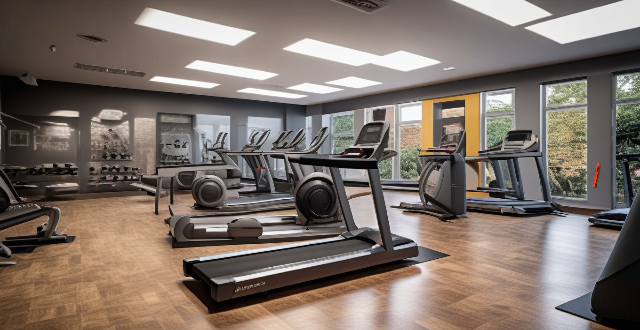
How does breathable material technology impact sportswear ?
Breathable material technology has revolutionized sportswear by enhancing comfort, performance, durability, and sustainability. This innovation allows for temperature regulation and moisture management, keeping athletes dry and comfortable during physical activity. It also improves muscle efficiency, reduces fatigue, and aids in recovery. Additionally, breathable materials are designed to be durable and long-lasting, reducing the need for frequent replacements. Lastly, eco-friendly production methods and increased durability contribute to environmental benefits by minimizing waste and promoting sustainability.

Can sportswear companies produce more sustainable products ?
Sportswear companies can produce more sustainable products by using eco-friendly materials, reducing waste, and adopting circular economy principles.

What is the function of thermoregulation in high-tech sportswear ?
The text discusses the function of thermoregulation in high-tech sportswear. It explains that thermoregulation is crucial for athletes to maintain their optimal body temperature during physical activities, as overheating or being too cold can affect their performance and increase the risk of injury. High-tech sportswear uses advanced materials and technologies to regulate temperature and manage moisture, including insulation, ventilation, moisture-wicking capabilities, and quick drying. These garments also adapt to different environments through layering systems and seasonal variants. Overall, the function of thermoregulation in high-tech sportswear is essential for athletes to stay comfortable, focused, and efficient during their activities.

Are there any eco-friendly sportswear brands that are also trendy ?
Sportswear has become a significant part of our daily lives, and many people are looking for eco-friendly options. However, finding sportswear brands that are both trendy and environmentally conscious can be challenging. In this article, we discuss some of the best eco-friendly sportswear brands that are also stylish and fashionable. Patagonia is a well-known brand that focuses on creating high-quality outdoor clothing and accessories using sustainable materials such as organic cotton, recycled polyester, and traceable down. Their sportswear line includes stylish jackets, pants, and shirts that are perfect for any outdoor activity. prAna is another popular brand that offers sustainable and stylish sportswear. They use organic cotton, hemp, and recycled materials to create their clothing, including comfortable leggings, joggers, and tank tops that are perfect for yoga or running. Adidas collaborated with Parley for the Oceans to create a sportswear line made from recycled ocean plastic. The collection includes shoes, jerseys, and shorts that are not only eco-friendly but also stylish and trendy. Reebok teamed up with Usain Bolt to create a sportswear line that is both eco-friendly and stylish. The collection includes tracksuits, t-shirts, and sneakers made from sustainable materials such as recycled polyester and organic cotton. Lululemon recently partnered with Girlfriend Collective to create a sportswear line made from recycled water bottles. The collection includes leggings, bras, and shorts that are not only eco-friendly but also stylish and comfortable. In conclusion, there are several eco-friendly sportswear brands that are also trendy. These brands use sustainable materials to create stylish and comfortable clothing that is perfect for any outdoor activity. By choosing these brands, you can make a positive impact on the environment while staying fashionable.
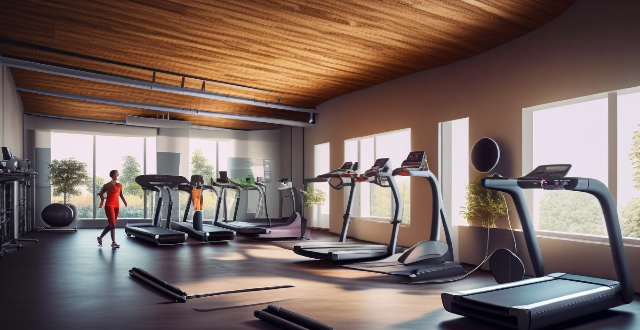
What are the latest advancements in sportswear technology ?
The latest advancements in sportswear technology include smart garments with sensors for real-time performance feedback, improved materials for comfort and moisture management, customized footwear for personalized fit and support, and augmented reality training for interactive and engaging learning experiences. These innovations are enhancing athletes' efficiency, comfort, and overall experience, helping them achieve their goals faster and more effectively.

How do anti-bacterial fabrics contribute to sportswear innovation ?
Anti-bacterial fabrics contribute to sportswear innovation by improving hygiene, enhancing durability, improving performance, and offering customization options. They reduce the growth of bacteria in garments, keeping them fresher for longer periods, extending their lifespan, and providing a comfortable and dry environment during physical activities. Manufacturers can choose from various antimicrobial agents and treatments to create unique garments that cater to specific needs.
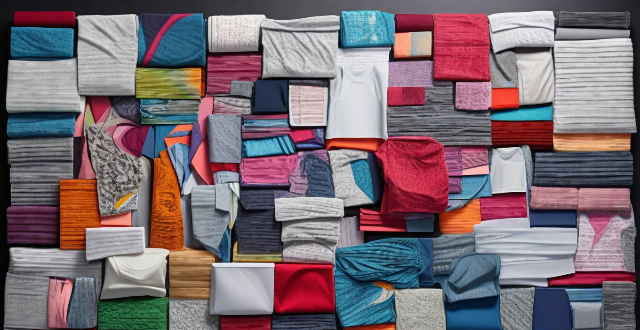
What are the benefits of using 3D printing in creating custom sportswear ?
Using 3D printing in creating custom sportswear offers numerous benefits, including improved performance, enhanced support, increased flexibility, personalization and customization, tailored fit, custom designs, sustainability, on-demand production, and reduced waste. This technology allows for intricate patterns and structures that are not possible with traditional manufacturing methods, providing better support, flexibility, and breathability. It also enables the creation of sportswear with personalized designs that reflect individual preferences and requirements. Additionally, using 3D printing promotes sustainability and efficiency by producing only what is needed and reducing waste associated with overproduction. In conclusion, 3D printing is revolutionizing the way we think about sportswear production and consumption, enhancing performance, comfort, style, and promoting sustainability and efficiency.

How does smart sportswear help in injury prevention ?
Smart sportswear is revolutionizing the way athletes and fitness enthusiasts approach their workouts by providing real-time feedback on their performance and body metrics. This technology not only enhances athletic performance but also plays a crucial role in injury prevention. Below are several ways smart sportswear contributes to reducing the risk of injuries: Monitoring biometric data, providing feedback in real-time, tracking progress over time, enhancing warm-up and cool-down routines, alerting on environmental factors, and promoting consistency and habit formation.
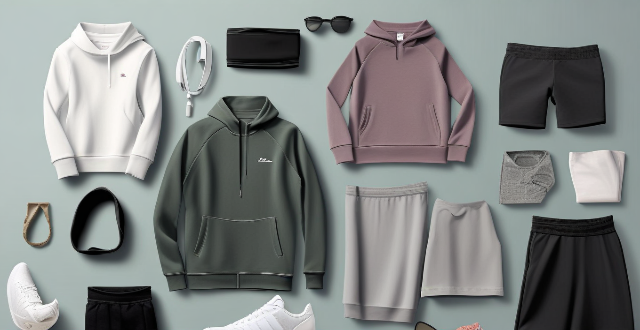
What is the significance of color trends in sportswear fashion ?
Color trends are crucial in sportswear fashion, impactColor trends are crucial in sportswear fashion, impact, performance, perception, market impacting design, branding, performance, perception, market trends, and consumer preferences. They enhance visual appeal, establish brand identity, reflect seasonal variations, influence mood and motivation, provide psychological benefits, foster team unity, follow broader fashion trends, consider consumer preferences, and serve as marketing tools. Sportswear designers and brands must stay informed about current color trends to remain competitive.

How to accessorize your sportswear for a chic look ?
Accessorizing your sportswear can be a fun and creative way to elevate your outfit from basic to chic. Here are some tips on how to achieve that stylish look: 1. Start with the Basics: Invest in quality sportswear pieces that fit well and are comfortable to move in. Stick to neutral colors like black, white, or gray so that you can easily mix and match accessories. 2. Add a Pop of Color: Incorporate colorful accessories like a brightly colored scarf, hat, or shoes to draw attention and make your overall look more interesting. 3. Layer Up: Layering is key when it comes to accessorizing your sportswear. Start with a base layer like a tank top or t-shirt, then add a jacket or cardigan on top. Experiment with different textures like denim, leather, or fur. Remember not to go overboard – less is often more when it comes to layering. 4. Choose the Right Footwear: Your footwear can make or break your sportswear ensemble. Opt for sneakers or slip-ons that complement your outfit without stealing the show. If you want to add some height, try a pair of ankle boots or heels. Just make sure they're comfortable enough for any physical activities you might engage in. 5. Don't Forget the Details: Finally, don't forget about the little details that can really pull together your look. A statement necklace, bold earrings, or a trendy belt can all add that extra touch of chicness to your sportswear. Just be careful not to overdo it – one or two standout accessories should do the trick.

How can one incorporate sportswear into a business casual look ?
Incorporating sportswear into a business casual look can add a touch of comfort and style to your outfit. Here are some tips on how to do it effectively: - **Choose the Right Pieces:** Select pieces that blend seamlessly with your existing wardrobe, such as sneakers, athletic jackets, and performance polos. - **Mix and Match:** Don't be afraid to mix and match different types of clothing to create a unique and stylish outfit. - **Pay Attention to Color and Pattern:** Stick to neutral colors like black, white, gray, and navy, and avoid loud patterns or logos. - **Accessorize Appropriately:** Add accessories like a leather watch or simple necklace to elevate your outfit, but don't go overboard. - **Keep it Clean and Well-Maintained:** Regularly wash your clothes and take care of any stains or damage promptly to ensure your outfit looks polished and professional.

Is there a difference between men's and women's sports fashion trends ?
Is there a difference between men's and women's sports fashion trends? Yes, there is. Men's sportswear tends to be more minimalistic and understated compared to women's. Women's sportswear often incorporates feminine touches and bold designs while still maintaining comfort and functionality.

What brands are popular for combining sportswear and fashion ?
近年来,运动服与时尚的融合成为了一种趋势。许多品牌推出了结合了运动功能性和日常时尚感的产品,满足了人们既想保持舒适活跃又希望造型时尚的需求。Nike、Adidas等知名品牌在这一领域有着广泛的产品线,从运动鞋到休闲装应有尽有。Lululemon专注于提供适合瑜伽等活动的运动服饰,同时注重时尚设计。Gymshark则以现代风格为特点,打造性能与时尚兼备的服装。Puma和Reebok也通过与艺术家和设计师的合作,提供了独特的产品。Under Armour以其高性能材料和专业运动员合作闻名。这些品牌不仅吸引了运动员,也受到了追求时尚生活的消费者的欢迎。
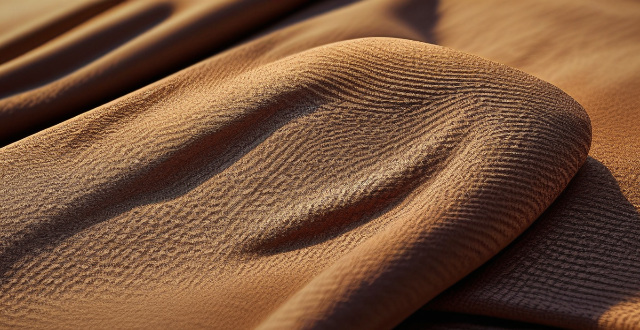
How do UV-protective fabrics influence the design of outdoor sportswear ?
The integration of UV-protective fabrics in the design of outdoor sportswear has significantly influenced its functionality and safety. Material selection, garment construction, aesthetics, and durability are key considerations in this process. Designers ensure that these garments offer protection from harmful UV rays while also being comfortable, durable, and visually appealing.

What role does technology play in shaping sports-inspired fashion ?
Technology has significantly impacted sports-inspired fashion through fabric innovations, digital marketing, and customization options. Advanced fabrics like nanotechnology, smart fabrics, and sustainable materials enhance performance and style. Social media platforms and virtual/augmented reality technologies boost brand promotion and customer engagement. Customization features allow for unique designs, while 3D printing opens up personalized sportswear possibilities.
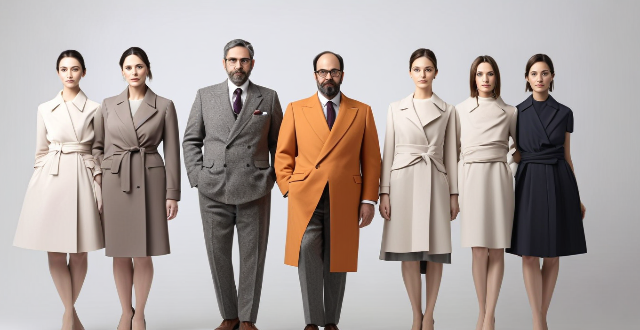
How does protective clothing work to prevent exposure to hazardous materials ?
Protective clothing shields wearers from hazardous materials through barrier materials, sealed enclosures, breathability features, and disposability. Its effectiveness depends on proper training, fit, maintenance, and responsible disposal practices.

What materials are commonly used in ecological design, and why ?
This article discusses materials used in ecological design, including recycled and reclaimed materials such as recycled metals, reclaimed wood, and glass; sustainable materials like bamboo, cork, and linoleum; and low-impact materials such as concrete, insulation, and sheep's wool. It emphasizes that ecological design prioritizes materials with minimal environmental impact throughout their life cycle.

What materials are used to make durable iPhone cases ?
Durable iPhone cases are designed to protect your device from drops, scratches, and other types of damage. The materials used to make these cases play a crucial role in determining their durability and effectiveness. In this article, we will explore the different materials used to make durable iPhone cases and discuss their benefits and drawbacks.

What are some good tools for creating and sharing study materials ?
This article discusses various tools that can be used for creating and sharing study materials. Google Docs, Canva, and Quizlet are some of the best tools for creating study materials, while Dropbox, Padlet, and Edmodo are great for sharing them. These tools offer features like collaboration, accessibility, integration, design, gamification, storage, security, visualization, educational focus, and assessment. By utilizing these tools, students can enhance their learning experience and collaborate with others more efficiently.

What is the future of biodegradable materials in sports apparel ?
The article explores the future of biodegradable materials in sports apparel, highlighting their benefits and challenges. Biodegradable materials offer environmental benefits by reducing waste and pollution, supporting sustainable practices, and providing new opportunities for innovation in sports apparel design and functionality. However, they also face challenges such as cost, durability, and availability. The article suggests potential applications of biodegradable materials in sports apparel, including running shoes, activewear, team uniforms, and accessories. It concludes that while challenges must be addressed, the benefits of using biodegradable materials make them an attractive option for sports apparel manufacturers looking to reduce their environmental impact and appeal to eco-conscious consumers.

What is the impact of lightweight materials on athletic performance ?
The article discusses the impact of lightweight materials on athletic performance, highlighting their benefits and potential drawbacks. Lightweight materials can improve speed, agility, comfort, durability, performance, and precision in sports equipment and apparel. However, they often come at a higher cost and may not be widely available or easily obtainable. Durability concerns and comfort trade-offs should also be considered when selecting lightweight materials for sports equipment and apparel. Overall, athletes should carefully weigh these factors to make informed decisions that maximize their performance while minimizing any potential risks or drawbacks associated with lightweight materials.
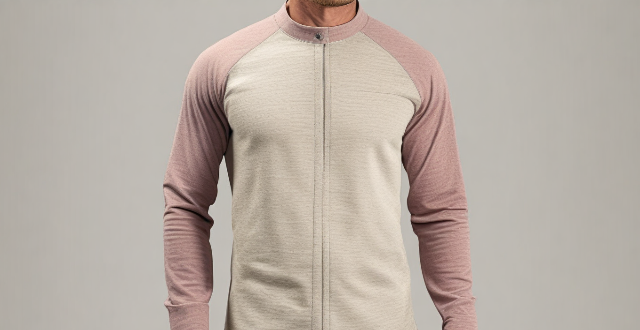
What are the most common materials used in the production of protective clothing ?
Protective clothing is designed to safeguard individuals from hazardous environments or conditions. The materials used for such garments play a crucial role in providing the necessary protection while ensuring comfort and functionality. In this article, we will explore the most common materials used in the production of protective clothing: Polyester, Cotton, Nylon, Neoprene, and Gore-Tex.
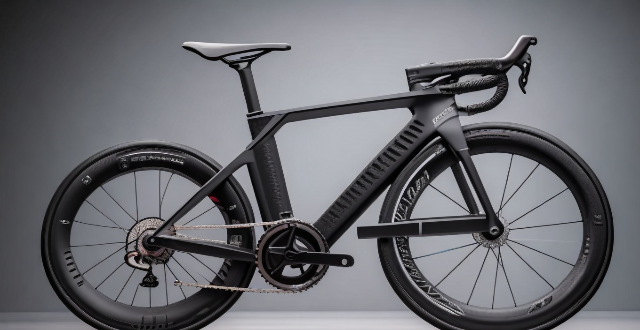
How have advancements in materials science impacted sports equipment design ?
Advancements in materials science have significantly impacted sports equipment design, improving durability, performance, safety, comfort, and customization. Examples include carbon fiber bats, advanced composite tennis racquets, titanium golf clubs, aerodynamic cycling helmets, shock-absorbing running shoes, breathable athletic apparel, customized orthotics, and personalized mouthguards. These innovations not only enhance the athletes' performance but also reduce waste, making it an environmentally friendly option.

What are some emerging technologies or materials being developed for improved radiation protection ?
This article discusses various emerging technologies and materials being developed to improve radiation protection, including advanced shielding materials like nanomaterials and metal-organic frameworks (MOFs), smart detection systems for real-time monitoring and machine learning-powered analysis of radiation levels, personal protective equipment (PPE) such as next-generation spacesuits and radiation-resistant clothing, medical countermeasures like radioprotectants and gene therapy, and nuclear waste management solutions like Synroc and glassification. These advancements aim to enhance safety and security in environments where radiation is a concern, across sectors such as nuclear power generation, medical applications, space exploration, and nuclear waste management.

What are some emerging trends in the field of energy storage materials research ?
The text discusses the latest trends in energy storage materials research, focusing on solid-state batteries, flow batteries, metal-air batteries, supercapacitors, redox flow batteries, hybrid energy storage systems, nanostructured materials, smart grid integration, thermal energy storage, and organic/bio-based materials. Each section provides a brief overview of the technology's advantages and current research challenges.

What new materials are being used in the production of sports equipment ?
The sports industry is constantly evolving, and with that evolution comes the introduction of new materials used in the production of sports equipment. These materials are designed to enhance performance, increase durability, and improve safety for athletes. Some of the latest materials being used in sports equipment production include carbon fiber, titanium, aerogel, Kevlar, and polyurethane foam. Carbon fiber is lightweight yet incredibly strong, making it ideal for use in items such as bicycle frames, tennis rackets, and golf clubs. Titanium is lightweight, corrosion-resistant, and extremely durable. Aerogel is incredibly light yet strong enough to support significant weight. Kevlar is known for its exceptional strength and heat resistance. Polyurethane foam provides excellent cushioning and shock absorption properties. As technology advances and athletes demand better performance from their gear, we can expect to see even more innovative materials being developed and incorporated into sports equipment production.

Can speed reading be applied to all types of texts, including technical and academic materials ?
Speed reading can be applied to all types of texts, including technical and academic materials, but it is important to consider the challenges associated with these types of texts. While speed reading offers time-saving and comprehension improvement advantages, technical and academic materials often contain complex terminology and concepts that require careful consideration and analysis. To effectively apply speed reading to these materials, individuals can employ pre-reading strategies such as previewing and setting objectives, during reading strategies like skimming and scanning, and post-reading strategies including reviewing and summarizing. By using these strategies, readers can maximize the benefits of speed reading while still achieving a deep level of comprehension.

What innovative materials and technologies are being used in modern construction to address climate challenges ?
Innovative materials and technologies in modern construction are being used to address climate challenges. These include green building materials, energy-efficient technologies, water efficiency solutions, and waste management strategies. Recycled materials, eco-friendly insulation, low-emission coatings, solar power systems, smart building management, high-performance glass, rainwater harvesting systems, water-saving fixtures, on-site recycling centers, and waste-to-energy technologies are among the key solutions being adopted. These advancements aim to reduce the environmental impact of buildings, improve energy efficiency, and enhance sustainability.

How has technology influenced the design of sports fashion ?
Technology has significantly influenced sports fashion design, introducing advanced materials, digital printing techniques, smart wearables, and increased customization options. These innovations have enhanced the functionality, comfort, and style of sports apparel, catering to individual preferences and needs.